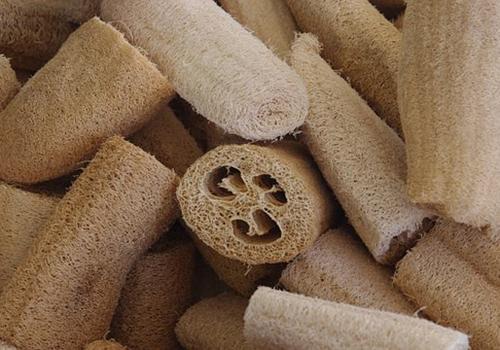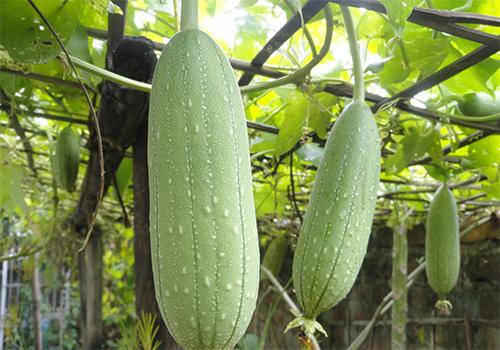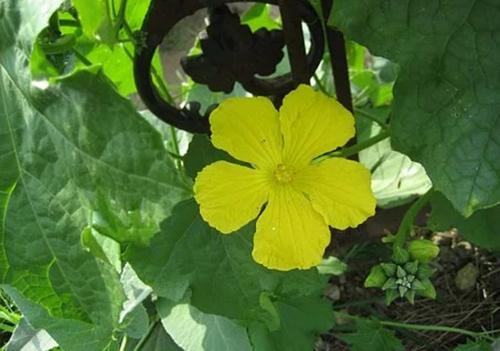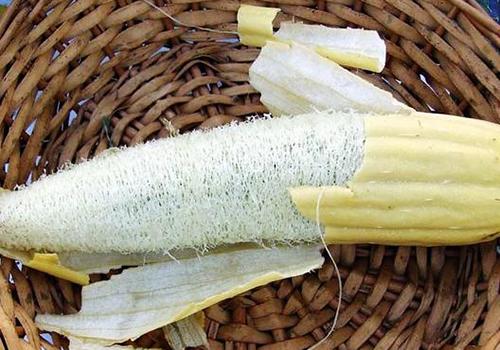Luffa, also known as loofah, is best known as a kind of sponge.
However, unlike true sponges, luffa does not come from the sea. They are a type of plant in the species Cucurbitaceae, the same family as cucumbers, squashes, and melons.
The great news is that, with a little hard work, you can grow your own luffa and turn them into sponges at home. Here’s all you need to know.

What Is Luffa?
The terms ‘luffa’ and ‘loofah’ are used somewhat interchangeably. However, people often use ‘luffa’ to describe the plant and ‘loofah’ to describe the sponges they become.
There are two main species of luffa, the angled luffa (Luffa aegyptiaca) and the smooth luffa (Luffa cylindrica). The difference is that angled luffas have distinct ridges running along their entire length.

On the other hand, smooth luffas are rounder with shallow creases. Both species of luffa can be used to make loofah sponges. Young luffa fruit is also edible and rich in vitamins A, B5, B6, C, manganese, potassium, and copper. They taste similar to summer squash. If you want to eat your luffa, pick them before they are 12 inches long. After this, they become very tough and bitter.
How To Grow Luffa
Luffa is not the easiest plant to grow, but with a little effort, it is possible to achieve a good harvest. Here’s how to grow luffa plants successfully.
Sow The Seeds
Luffa plants have a long growing season and require warm temperatures to thrive. Therefore, it is best to start them off indoors in April or May. You can then transplant them outside once the risk of frost has passed.
Select seeds that are dark and firm. Pale, soft seeds are immature and will not germinate.
Some growers recommend soaking the seeds in water for 24 hours before planting to increase the germination rate. It is best to sow more luffa seeds that you need in case some fail to germinate. You can sow 2–3 luffa seeds in a 4-inch pot.
Choose Your Location
Luffa grows best in a sunny, sheltered location with well-drained soil. Keep in mind that luffas grow on a vine that can reach up to 30ft long. Therefore, you will need to provide a sturdy trellis or fence to support the plants as they grow.
Transplant The Seedlings
Once the first true leaves appear on your luffa seedlings, transfer them to larger pots. These plants are delicate, so take care to reduce the risk of transplant shock.
If you intend to keep your luffa plants in pots, you will need one 25–30-gallon pot per plant. If you plan to grow them in the ground, consider using peat or paper pots so you won’t need to transplant them again.
Only place your luffa seedling outside once there is no more risk of frost.
The Luffa Growth Cycle
As your luffa plants grow, drape the vines over your support and secure with ties if necessary. During the early vegetative stage, you should add mulch to the soil to suppress weed growth. Then add nutrient-rich compost or well-rotted manure to nourish your plants as they grow.
As the plants start flowering, you should see attractive yellow blooms start to appear. At this stage, you can feed them with an all-purpose fertilizer once a week. For the flowers to develop into luffa fruit, they need to be pollinated.

Bees and other insects should be sufficient for this task. However, if you are concerned, you can use a soft brush to pollinate the flowers by hand. Once the flowers are pollinated, they should start to develop into long, green luffa fruit.
Harvesting Your Luffa
The right time to harvest luffa is when they turn yellowish-brown and feel light in your hand. If there is a risk of frost, you can harvest them while still slightly green.
How To Turn Luffa Into Sponges
Once you have harvested your luffa, peel off the skin to reveal the tough fibers inside. You can make this task a little easier by lightly crushing or rolling the luffa on a hard surface before you begin.

Once you have peeled off the skin, wash the luffa well under running water or in a large bucket. You want to remove the seeds and any traces of flesh. Save any healthy-looking seeds for next year and dry your luffa in the sun. Turn them frequently to ensure that they dry evenly, and watch for any signs of mold.
Once they are dry, you can use your luffa as they are or cut them into smaller pieces as required. Use them to wash your face, body, dishes, and household surfaces. You can even use luffa to clean your car!


